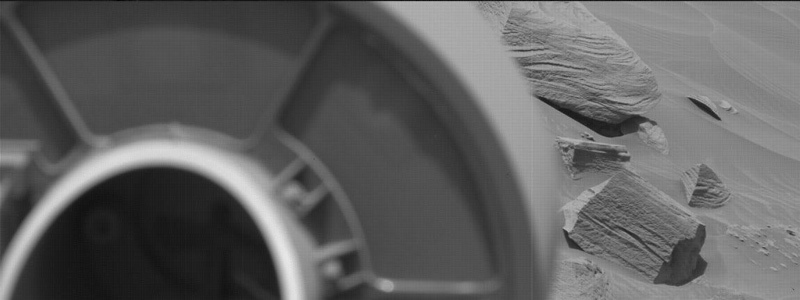3 min read

In the weekend plan the remainder of the “Edinburgh” drill sample was dumped, which means that we are almost finished with activities in this drill location. This two-sol plan is filled with activities to characterize the dump pile and drill hole as well as remote sensing observations.
APXS and MAHLI have plenty of targets in this plan. APXS attempted to document the new dump pile in the weekend plan, but that observation was offset from the intended target because we did not know exactly where the dump pile would be. Now that we have images of the dump pile, we know its specific location and APXS will redo that measurement. Additionally, APXS will observe the drill hole tailings. MAHLI will be used to document the dump pile and the drill hole tailings. In this plan MAHLI will also take nighttime images of the drill hole walls and of the CheMin inlet to make sure all the sample made it through the inlet.
For remote sensing, ChemCam will take an RMI observation looking towards Gediz Vallis. From our current location on the “Greenheugh” pediment we have a spectacular view looking up towards Mount Sharp and “Gediz Vallis,” so this observation is part of a series of ChemCam RMIs documenting areas that will be obscured once we descend off the pediment. ChemCam will also target the Edinburgh drill hole and tailings in this plan.
Mastcam will be retaking a portion of the “Hilltop” mosaic. The instrument’s arm ended up "waving at us" in the original mosaic, pictured above, which is fun (Hi, Curiosity!) but we decided to retake those frames so we can see the bedrock that the arm obscured.
We will also be finishing up a Navcam/Mastcam photometry experiment in this plan. The goal of this experiment is to model how light scatters off the surface. While Curiosity has been sitting here at the Edinburgh drill site, Navcam and Mastcam have been taking images of the same locations at multiple times of day to learn how light scatters from the surface at different sun angles. The final Navcam images were taken in this plan.
Finally, there will be several change detection observations to constrain the amount of wind activity in this area. The first observation is with Mastcam of a nearby ripple field to search for any changes in the ripples. The second is with MARDI because this instrument has been staring at the same patch of ground underneath the rover so if anything moved because of the wind or drill activities, MARDI is ready to observe the evidence.
This two-sol plan should finish up the activities at the Edinburgh drill site, and we expect to drive away on Wednesday!
Written by Kristen Bennett, Planetary Geologist at USGS Astrogeology Science Center







